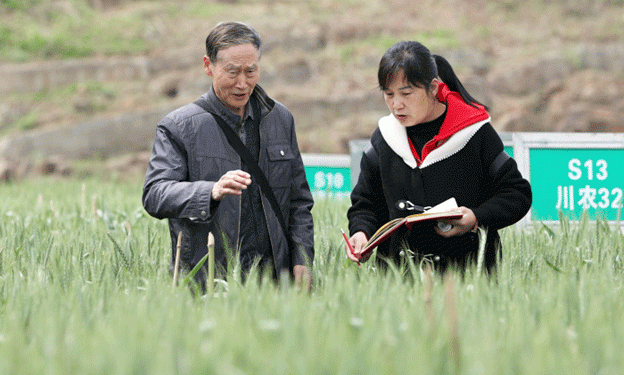On the misty banks of the Jialing River in Guangyuan’s Zhaohua District, a quiet agricultural revolution is taking place—led by a man whose life story mirrors the struggle and hope of China’s modern agricultural development. Xing Guofeng, a seasoned wheat breeder and former director at Southwest University of Science and Technology’s Wheat Research Institute, has returned home after retirement with one mission: to revitalize wheat farming in his birthplace, Hutuotown’s Nandou Village.
Born in 1950 into a rural family, Xing’s career has spanned over 30 years of wheat variety development, with more than 20 new cultivars credited to his name. His achievements include a National Science and Technology Progress Award (Second Class) and several provincial-level honors, marking him as one of China’s top contributors in cereal crop breeding.
But it’s what Xing has done since 2021 that truly exemplifies the future of grassroots agricultural innovation. Concerned that local farmers were abandoning wheat for oilseed rape due to misconceptions about profitability, Xing decided to act. “Many believed that wheat belongs only on poor land, and good land should go to oilseed,” he explained. “But wheat, if managed well, is just as profitable and more essential for food security.”
Xing rented 3 mu (0.2 hectares) of trial land, co-founded the Zhifeng Planting Cooperative, and began trialing dozens of wheat varieties suited for the local climate—one prone to yellow rust (Puccinia striiformis) and strong winds from the river. Over four years, he and his team expanded the test base to 15 mu, screened 74 promising lines, and released 5 high-performing varieties for local adoption.
One key variety, Mianmai 907, has shown exceptional results in Zhaohua’s windy, disease-prone environment, with yields reaching over 800 jin/mu (≈12 t/ha)—an increase of more than 30% over previous averages. Local government data confirms that over 20,000 mu of high-quality wheat have been promoted across the district under Xing’s guidance, benefiting more than 1,200 households and increasing average farmer income by 200 yuan per mu.
This success didn’t happen overnight. Xing’s approach is built on three pillars:
- Trial fields as innovation hubs
- Demonstration plots to inspire trust
- Mass promotion supported by training and accessible materials
He also developed comprehensive wheat cultivation guides, helping farmers adopt low-cost, high-efficiency practices—a major step toward sustainable and green agriculture, which aligns with China’s national strategy for agricultural modernization.
According to the Ministry of Agriculture and Rural Affairs, Sichuan is one of the key grain-producing provinces under the “National Food Security Base” program. Yet, challenges like disease pressure, urban migration, and declining wheat acreage threaten regional grain stability. Experts now see grassroots leaders like Xing Guofeng as crucial in reversing these trends.
In 2023, with support from the Zhaohua District Government, 8 villages adopted wheat demonstration programs covering 8,000 mu, driven by Xing’s varieties and know-how. The impact is clear. “I used to sigh during harvest season,” said local farmer Huang Bangbing. “Now, after planting the variety promoted by Mr. Xing, I harvested 10,000 jin more from just 100 mu.”
Even at over 70 years old, Xing continues to visit trial plots, inspect crop growth, and mentor farmers. His simple philosophy? “If people are willing to grow wheat, they can hold their rice bowls steady—and that means my work still matters.”
Xing Guofeng’s journey from academic breeder to hands-on rural reformer is more than an inspiring story—it’s a practical model for agricultural rejuvenation. By combining scientific expertise with local engagement, he has brought modern wheat farming to the hillsides of Sichuan, ensured better incomes for farmers, and helped stabilize grain production in a vital region. His legacy reminds us: the future of farming lies not just in technology, but in the trust between knowledge and community.
Error





